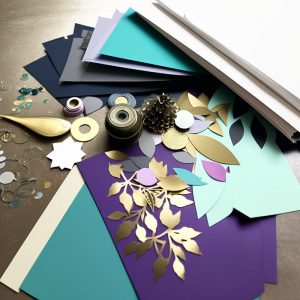Glazing is the final step in the pottery-making process, where raw clay is transformed into vibrant, durable, and often stunning works of art. It involves applying a liquid coating to the surface of the pottery, which then melts and fuses with the clay during the firing process.
Understanding Glazes
Glazes are complex mixtures of minerals, such as silica, alumina, and various metal oxides. The specific composition of a glaze determines its colour, texture, and overall appearance. Some common types of glazes include:
- Matte Glazes: These glazes produce a dull, non-reflective finish.
- Glossy Glazes: These glazes create a shiny, reflective surface.
- Crystal Glazes: These glazes develop crystalline formations on the surface of the pottery.
- Crackle Glazes: These glazes produce a network of fine cracks, known as crazing.
The Glazing Process
- Preparing the Surface: Before glazing, ensure the pottery is clean and dry. Any dust or debris can affect the quality of the glaze.
- Applying the Glaze: There are several techniques for applying glaze, including dipping, pouring, spraying, and brushing.
- Drying the Glaze: Allow the glazed pottery to dry completely before firing.
- Firing the Pottery: The glazed pottery is placed in a kiln and fired at high temperatures. The heat causes the glaze to melt and fuse with the clay, creating a durable and waterproof surface.
Tips for Successful Glazing
- Test Your Glazes: Always test new glazes on small pieces of clay to understand their behaviour.
- Control the Glaze Thickness: The thickness of the glaze can affect the final appearance and durability of the pottery.
- Consider Glaze Compatibility: If you’re using multiple glazes on one piece, ensure they are compatible and won’t react negatively with each other.
- Clean Your Tools: Clean your brushes and other tools thoroughly to prevent cross-contamination.
- Experiment and Have Fun: Don’t be afraid to experiment with different glazes and techniques to create unique effects.
The Art of Glaze Combinations
Combining different glazes can create stunning visual effects. Here are a few techniques:
- Colour Blending: Blend two or more glazes to create a gradual colour transition.
- Textured Glazes: Add texture to your glazes using materials like sand, sawdust, or metal oxides.
- Underglaze and Overglaze Decoration: Apply underglaze colours before glazing and overglaze colours after the first firing.
- Wax Resist: Use wax to resist the glaze in certain areas, creating intricate designs.
Glazing is a fascinating and rewarding aspect of pottery. By understanding the principles of glazing and experimenting with different techniques, you can create beautiful and functional pieces of art.






